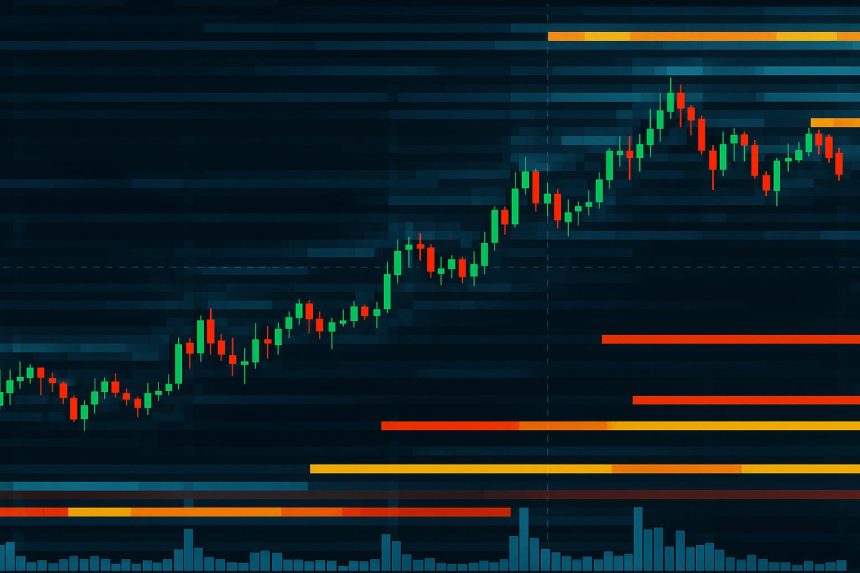Table of Contents
- 1. Introduction to Order Flow Trading
- 2. Understanding Order Flow
- 3. The Importance of Liquidity in Trading
- 4. How Bookmap Enhances Order Flow Analysis
- 5. Key Features of Bookmap
- 6. Practical Applications of Order Flow Trading
- 7. Developing a Strategy with Bookmap
- 8. Common Mistakes to Avoid
- 9. The Future of Order Flow Trading
Introduction to Order Flow Trading
Order flow trading is a sophisticated approach that allows traders to analyze and interpret the flow of orders in the market. Unlike traditional analysis methods that focus on price and volume, order flow trading offers a more granular view of how trades are executed, which can significantly enhance decision-making processes. This blog post will delve into the intricacies of order flow trading, emphasizing the capabilities offered by Bookmap, a leading platform designed to visualize and streamline this form of trading.
Understanding Order Flow
Order flow refers to the actual orders that are placed in the market, including buy and sell orders. Understanding order flow requires analyzing not just the prices at which these orders are executed but also the size and timing of transactions.
1. Buy Orders: These represent demand in the market and indicate a willingness to purchase at given price levels.
2. Sell Orders: These reflect supply and showcase the readiness to sell at specific prices.
3. Market Depth: This includes all outstanding orders in the market, providing insight into potential support and resistance levels.
By examining order flow, traders can gauge market sentiment and anticipate price movements better than through traditional technical analysis alone.
The Importance of Liquidity in Trading
Liquidity plays a crucial role in order flow trading as it refers to the ease with which an asset can be bought or sold without causing significant price changes. High liquidity typically results in tighter spreads between bid and ask prices, enabling traders to enter and exit positions with minimal cost.
1. Market Impact: In illiquid markets, large orders can lead to increased volatility, making it essential for traders to understand how their actions might affect prices.
2. Order Types: Different order types (market orders, limit orders) can influence liquidity and should be strategically employed based on current market conditions.
3. Timeframe Considerations: The liquidity of an asset may vary across different timeframes, impacting order execution quality.
Understanding these aspects of liquidity is fundamental for anyone interested in executing successful order flow strategies.
How Bookmap Enhances Order Flow Analysis
Bookmap is a cutting-edge platform that revolutionizes how traders visualize order flow data. By providing detailed heatmaps and real-time market data, Bookmap enables traders to see where liquidity is concentrated and how it evolves over time.
Visual Representation: The heatmap feature allows users to observe active price levels where substantial buy or sell orders exist, facilitating informed decision-making.
Real-Time Updates: Traders can access live updates on order book changes, allowing them to adapt their strategies dynamically based on current market conditions.
Volume Profile Integration: Bookmap integrates volume profiles that highlight significant areas of trading activity over specific periods, helping traders identify key support and resistance zones.
These features uniquely position Bookmap as an invaluable tool for those engaged in order flow trading.
Key Features of Bookmap
Several notable features set Bookmap apart from other trading platforms:
1. Depth of Market Visualization: Users can see a three-dimensional representation of market depth, which reveals hidden liquidity levels.
2. Historical Data Playback: Traders can replay past market sessions to analyze how order flow influenced price movements.
3. Customizable Interface: Bookmap allows users to tailor their layout according to personal preferences, ensuring they have access to the most relevant information quickly.
4. Integration with Other Tools: The platform supports various broker integrations, enabling seamless execution alongside analytical capabilities.
By leveraging these features, traders can enhance their understanding of order dynamics within their chosen markets.
Practical Applications of Order Flow Trading
Order flow trading is not merely theoretical; it has practical applications that can yield real results in various trading environments:
1. Scalping: Traders can use rapid execution techniques by analyzing live order flows for short-term gains.
2. Swing Trading: Understanding larger trends through accumulated order flows provides insights into potential entry and exit points.
3. Market Making: Proficient traders may act as market makers by identifying discrepancies between supply and demand through order flows.
Implementing these strategies with tools like Bookmap can significantly increase a trader’s probability of success.
Developing a Strategy with Bookmap
To effectively develop an order flow trading strategy using Bookmap, consider these steps:
1. Define Market Conditions: Identify whether you are trading in a trending or ranging market environment as this will influence your approach.
2. Set Entry and Exit Points: Use Bookmap’s visualization tools to establish strategic points based on liquidity zones revealed by the heatmap.
3. Manage Risk Appropriately: Determine your risk tolerance level and use stop-loss orders judiciously based on historical support or resistance areas identified through volume profiling.
4. Continuous Learning: Regularly review your trades using historical data playback within Bookmap to refine your strategy over time.
Each step is critical for building a robust framework that leverages order flow insights effectively.
Common Mistakes to Avoid
Even seasoned traders make mistakes when engaging in order flow trading; being aware of common pitfalls can help improve results:
1. Ignoring Market Context: Failing to consider broader market conditions when interpreting order flow data may lead to erroneous conclusions.
2. Overtrading: Reacting impulsively to each fluctuation in order flow without a well-defined plan often results in losses.
3. Neglecting Risk Management: Not employing adequate risk management strategies can expose capital unnecessarily during volatile periods.
By avoiding these mistakes and using tools like Bookmap diligently, traders can enhance their performance significantly.
The Future of Order Flow Trading
As technology continues to evolve, so too does the landscape of trading strategies available to investors. The future of order flow trading looks promising due to advancements in data analytics and visualization tools.
Artificial Intelligence Integration: Emerging AI technologies could further refine how traders interpret complex datasets related to order flows.
Enhanced Retail Access: As platforms like Bookmap become more accessible, retail traders will increasingly adopt sophisticated strategies previously reserved for institutional investors.
Greater Market Efficiency: Increased transparency provided by advanced order flow visualization could lead toward more efficient pricing across markets.
Traders who stay ahead of these trends will likely find themselves at an advantage as they navigate an ever-evolving marketplace.
Order flow trading represents a powerful approach that goes beyond traditional analysis methods by focusing on the actual mechanics behind price movements. With tools like Bookmap at their disposal, traders gain access to unprecedented insights into market dynamics that empower them to make informed decisions swiftly and effectively. Embracing this methodology opens up new avenues for success while enhancing overall trading proficiency in today’s fast-paced financial environment.
Lynn Martelli is an editor at Readability. She received her MFA in Creative Writing from Antioch University and has worked as an editor for over 10 years. Lynn has edited a wide variety of books, including fiction, non-fiction, memoirs, and more. In her free time, Lynn enjoys reading, writing, and spending time with her family and friends.















